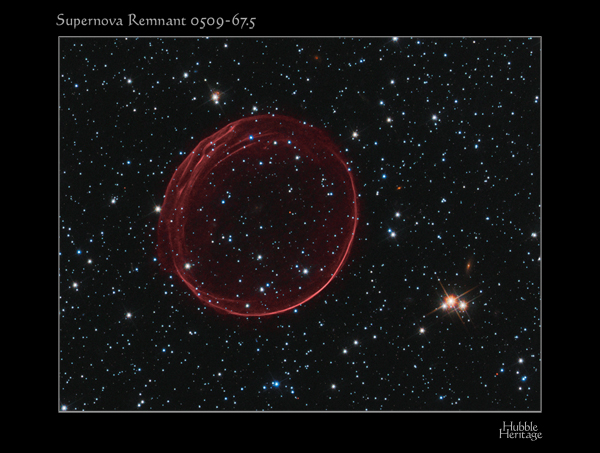 Astronomers describe new class of planetary system
Astronomers describe new class of planetary systemResearch presented today at the annual meeting of the American Astronomical Society indicates that circumbinary planetary systems--planets that orbit two stars--are not rare, rather that millions may exist in the Milky Way alone. At a press conference today, William Welsh of San Diego State University described Kepler 34b and Kepler 35b, the newest additions to this new class of planetary systems. The work is published in the January 12 issue of the journal Nature.
"The eclipses of the stars allow us to measure the properties of the stars with exquisite precision," said Welsh, "which in turn allows us to measure the planet properties."
The transits (small eclipses) caused by the planet provide the definitive proof of the planet's existence, while the big eclipses of the stars allow scientists to measure the properties of the stars with precision. This, in turn, allows them to measure the planet properties.
Now that three such systems have been directly observed (Kepler 16b was announced in September) researchers have found a diversity of stellar and planetary orbits in this new class of planetary system, and are eager to investigate how planets form around a pair of stars.
With support from the National Science Foundation (NSF), Welsh's research team will continue to search for more planets, both transiting and non-transiting. "We are by no means done," he said, "and finding circumbinary planets is much harder than finding planets around single stars."
Clues to supernova origins announced
Another discovery, made by researchers from Louisiana State University, showed that the center of a nearby supernova remnant--the leftovers of an exploding star--named SNR 0509-67.5 lacks a companion star, perhaps providing another clue as to how supernovae originate.The finding is important because researchers theorize supernovae form when very dense, very small stars, called white dwarfs, explode. These explosions could be triggered by the merger of two white dwarfs--the so-called double-degenerate model--or by a companion star transferring mass to the white dwarf causing it to explode--the single-degenerate path.
Scientists distinguish between double-degenerate and single-degenerate models by looking for the companion star that might have been near the exploding white dwarf. If the progenitor of the remnant--the exploding white dwarf--resulted from a single-degenerate model, then there should be a companion star still visible near the supernova remnant. If the progenitor resulted from a double-degenerate, then there will be no visible companion.
In the case of this discovery, researchers could not find a companion star.
"Our NSF proposal is to help solve the Type Ia supernova progenitor problem, named one of the top nine questions in all astronomy [by the recent decadal review of the National Academy of Sciences]," said Brad Schaefer, coauthor of the study. "With this, we prove that SNR 0509-67.5 came from a double-degenerate system, where two white dwarfs in a close binary orbit slowly in-spiral until they collide and explode as a Type Ia supernova."
Astronomers from the University of Pittsburgh also announced today the most accurate determination yet of the color of the Milky Way Galaxy: pure white. Assistant professor of Physics and Astronomy Jeffrey Newman and graduate student Timothy Licquia used data from the Sloan Digital Sky Survey (SDSS) to draw this conclusion, which they anticipate will help provide some context as to how the Milky Way compares to other galaxies.
Studying the "cosmic color" of the Milky Way may seem straight forward, but because Earth's solar system is located well within the Milky Way, clouds of gas and dust obscure much of the galaxy from view, preventing researchers from seeing the "big picture."
Using the SDSS data, the researchers identified galaxies similar to the Milky Way in terms of the total amount of stars and the rate at which they create new stars. Both properties are related to the brightness and color of a galaxy. Newman and Licquia used the average color of the similar galaxies to infer the color of the Milky Way.
Astronomers divide most galaxies into two broad categories based on their colors: red galaxies that rarely form new stars and blue galaxies where stars are still being born. The new measurements place the Milky Way near the division between the two classes.
Heineman Prize winner Kirshner speaks
Robert Kirshner, winner of the 2011 Dannie Heineman Prize for Astrophysics, discussed the study of supernovae, what astronomers have learned from them over the past several decades and which of their properties hold promise for helping researchers understand the puzzle of dark energy.Evidence from supernovae indicate that cosmic expansion has been speeding up over the last 5 billion years. Scientists attribute this to something called dark energy. They know how much dark energy there is because they know how it affects the Universe's expansion. Other than that, it is a complete mystery.
Adam Riess of Johns Hopkins University and the Space Telescope Science Institute and Brian Schmidt of the Australian National University were supported by Kirshner's NSF grants during a period in the 1990s when key supernovae observations were made. These observations were crucial to the discovery of dark energy and the accelerating universe by means of observations of distant astronomical supernovae, for which the 2011 Nobel Prize for Physics was awarded to Reiss, Schmidt and Saul Perlmutter of Lawrence Berkeley National Laboratory and the University of California, Berkeley.








No comments:
Post a Comment